-
Posts
2,417 -
Joined
-
Last visited
Content Type
Profiles
Forums
Store
Help Articles
Posts posted by Jim D.
-
-
I received my new square molds and have been enjoying the shape and the decorating possibilities. This is a lemon square (lemon butter ganache and shortbread crisp) molded in dark Felchlin Maracaibo chocolate:
The catch is the size of the molds. I knew it before purchasing, of course, but I didn't realize how heavy the molds would be when filled with chocolate. I am assuming they were designed for use with machinery. Imagine filling it with melted chocolate, turning it upside down, and scraping it. I need some heavy wrist exercises in the gym.
-
 6
6
-
 1
1
-
-
8 hours ago, Merry Berry said:
I often utilize a Stella Parks recipe for ladyfingers which uses whole eggs. Whole eggs and sugar/salt are whisked to 165°F in a pate a bombe mixture in a double boiler (I use my mixing bowl as the top bowl since you will be moving it to the mixer next). Take to mixer, put on your whisk and whip until tripled or so in size (I think her recipe calls for quadruple, but I am not sure it ever gets that much). Fold in zest (if using), flour, and cornstarch mixture. You can search for her recipe or I can post it here.
I have to assume you could spread on a silpat and bake like a cake instead of piping out the individual fingers. Even if you pipe them out, they puff up normal like a the old school separated eggs version. I make a lot of tiramisu for clients so I make it a lot. It's very easy and quick.
If you do not mind, what are you doing for your mascarpone layer? I was wanting to do a bonbon and was trying to decide what to use. I thought about a mascarpone type of whipped cream stabilized with a little cream cheese? But worried about that shelf life. I saw a few years ago you tried the cheesecake mixture, but were unhappy with it. I think maybe that could still work if tinkered with. And get Madeira or Marsala in it to help with flavor and maybe the water activity?
Thanks for your suggestion about the ladyfingers. I more or less settled on a method that is like yours, but with less work. I use whole eggs and beat the mixture, but not over heat (it doesn't rise much). Then I spread it on Silpats and bake it until it begins to brown, and then grind it into powder. It is the taste I want, so the rise is not important. I could not tell the difference in taste between this version and the traditional method.
My recipe for tiramisu bonbons is one I developed based on the ideas of others (and my own experience of tasting tiramisu). I first tried Kalle Jungstedt's recipe, but tiramisu must be different in Sweden because it had an almond flavor. So I use a typical coffee ganache, with cream (steeping coffee beans in it beforehand) and a mixture of extra-dark chocolate, white chocolate. and a little extra cocoa butter. To that I add mascarpone and Kahlua. This combination gives a noticeable coffee flavor, but it's diluted enough (with white chocolate and cocoa butter) so that the coffee doesn't totally dominate and the mascarpone and ladyfinger flavors show up. I pipe this ganache into a mold, filling the cavities about 2/3. Later I mix the ground "ladyfingers" with caramelized white chocolate, cocoa butter, and sea salt and pipe that on top of the coffee ganache. I haven't tried Madeira or marsala; I don't think I would want to add additional flavors, but it is an idea worth pursuing. The aW reading of my ganache is 0.83. According to Melissa Coppel, that translates to 3-6 weeks. First, I think a span of 3-6 weeks isn't a terribly useful guide. Second, 0.83 is higher than I like to go. I think that if I replace some of the glucose added to the ganache with sorbitol, I could lower the water content, but haven't had time to try that yet.
-
 1
1
-
-
7 hours ago, Phil Bard said:
I'm using a silicone stamp I made from pouring silicone molding material into the cavities I'm coloring, it's the same size. Then I just add color and swab the stamp to get the pattern I like. I guess the question I have is does this interfere with good crystallization even if the cb is well tempered.
That's a reasonable suggestion about testing, I'll check the butter on parchment next time I try this. I would think that the fact that most of the surface of my bonbons is very shiny would indicate the cocoa butter is tempered. And I have used the first method successfully on cocoa butter applied by my finger, everything released and the chocolate came out quite shiny. The first problems I had with sticking were when I replicated one of Andrey Dubovik's techniques, blowing on drops of cocoa butter in the cavities. Most of the bonbons came out fine, but a few stuck, see the image below. Then it continued when I made the stamp. What is truly puzzling me is why the stamped bonbons I made today and rolled over to inspect just after shelling were perfect, but then got stuck after adding ganache, capping and de-molding. I don't think the ganache was warm enough at 75F to melt the cb, but I suppose it's possible. Capping wouldn't do it would it? And if it did I would expect sticking near the point where the shell joins the cap.
My interpretation of the Harvey method is that you destroy all crystals, then allow only V to form as you never drop the temp low enough for any of the others to do so. At first I didn't get the part in Method 1 about lowering the temp so far, why let any of the other forms proliferate? But recently I ran across a nerdy/science vid on YouTube that explained the reason was that the further below the melting point of V you go, the faster the V crystals form. Even though you get down low enough for IV, V will proliferate very quickly, faster than if you stayed up at 92F or so. Raising the temp back above 78F kills off the IV and you have built a much more extensive network of V in less time.
I'm going to try using sylk the next time I mix colored cb, it's the method I've used without fail on bar chocolate and I have lots of sylk. That would take the temperature manipulation regimen out of the equation.
Thanks for your feedback, on Christmas Eve no less! Hope you enjoy your holiday.
Phil
About using the stamp: There is a very precise method for using stamps (posted by the people who make them). It involves heating the stamp to a high temp, then pressing it into the cavities (previously sprayed with CCB) for a very brief time (just a few seconds). It sounds as if you may be pressing the stamp for a longer period of time. You are probably overtempering the CCB (all that movement does it). I have had this happen (with the same results as yours) when I used a finger to mix several colors in a cavity to get a marbled effect or when I use a sponge to deposit color. It's always difficult to determine what causes a particular defect in a bonbon--any mistake along the way can do it, and the result isn't always logical.
Your results are often attributable to humidity . I live in Virginia, and making chocolates in the summer months is very difficult, even with my space air conditioned. You mentioned recent rains in your area. 50% humidity inside will work, but it's not ideal. This probably isn't the cause of your issues, but I'm just trying to cover all the possibilities.
I tried using silk to temper CCB for a while, but when working with small amounts, it probed to be too easy to overtemper the CCB, and so I returned to the raise/lower/raise temperature method. If you use silk to temper larger amounts of CCB, I would use less than 1%. In the online course I took with Andrey Dubovik, he always checked the temper of his CCB before using it. On the advice of people on this forum who know far more than I do (especially Kerry Beal and pastrygirl), I don't worry so much about the temper when spraying CCB (with spray gun or airbrush) because the movement involved in spraying contributes to tempering.
-
As a start, could you say more about what you mean by using a stamp to get the colored cocoa butter into the cavity? What sort of stamp? Are you referring to the hugely popular silicone stamps that make a pattern in the cavity or something else (a sponge perhaps?).
I know it's a nuisance, but another check would be to test the cocoa butter before using it. Spread a little on stone or parchment or just waxed paper and wait to see if it firms up and turns from shiny to matte. If it does, then it's tempered regardless of which method you are using for tempering. The traditional method for tempering includes the third step of raising the temperature back up to working temperature (the theory being that all types of crystals formed as you cooled the cocoa butter, so you have to melt the I-IV crystals, leaving type V). Kriss Harvey's method (also used by James Parsons) is not typical, but it seems to work--although I don't quite understand the science behind it.
-
If I recall correctly, Kate Weiser uses the method of shipping her chocolates when frozen and uses special packaging to protect them. Especially during the upcoming holiday season, there is no guarantee as to how long a package may sit around, so some sort of serious protection needs to be used.
-
 1
1
-
-
2 minutes ago, pastrygirl said:
@Jim D. are you of the 'heat gun before capping' school of thought, or nah? Maybe try whichever method you're not doing? 🙃
I have tried using the heat gun for all chocolates and noticed no difference. I have tried it for just caramels to avoid leaking, and I wasn't sure it made a difference. I tried it with half-spheres (which often show the chocolate line), and I probably overdid it because the bonbons stuck in the mold and needed more than a little pounding on the counter (they usually pop right out). I'll give it a try with this difficult square mold. With using silk to temper, I keep the chocolate a full degree above the norm so as to get as much heat as possible to join the bottom to the rest of the shell.
-
 1
1
-
-
3 hours ago, pastrygirl said:
Here’s a cocoa butter curiosity- this bottle of gold cb had been on its side in the melter for a while, I turned the melter off overnight, this morning there is a solid layer with all the color and clear CB that has separated out and is liquid at 72f. Separation happens, but I’ve never seen CB liquid at room temp. What’s up with that?
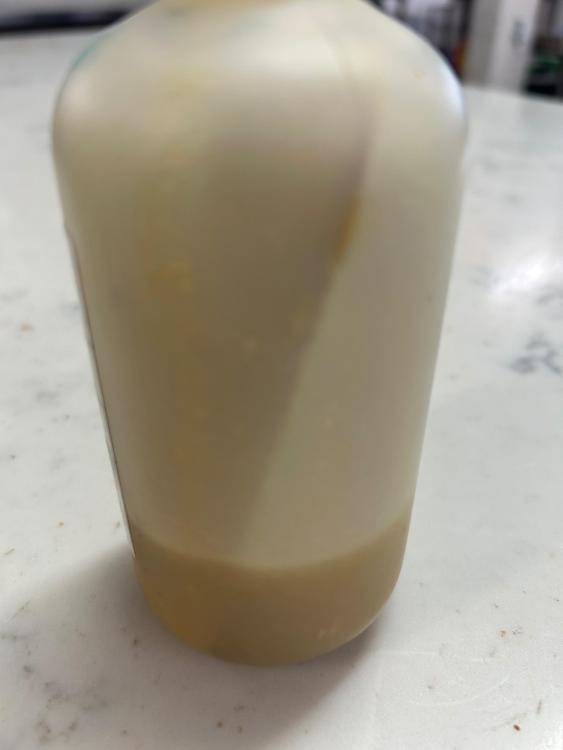
ill melt it down, shake it up, and assume its fine, but have I accidentally discovered form 7 of cocoa butter crystals? Or form zero since it’s not crystallized? 🤪I have had cocoa butter separate into plain CB and the color, but never with the CB liquid.
-
 1
1
-
-
9 hours ago, pastrygirl said:
This doesn't happen to me to often, but it's a 'flaw' I let slide when it does.
Couple thoughts: how spread out is your work flow? Same day shelling/filling/capping might help.
If you concentrate the color on the top of the bonbon and let it fade out towards the bottom, the seepage won't be as obvious.
And, I don't think you use cups, and cups are another step you might not want to add, but they would hide that bottom edge seepage.
If the bonbon has a dark color, the seepage doesn't show so much, but with the rose color in the photo, the chocolate was really obvious. I scraped it off for a few of them. Fortunately these molds make 40 bonbons per mold, so I had lots of extras. But for Christmas production, this is not acceptable. My "solution" for Christmas: I'm painting flowers similar to the ones shown and then shelling in Dulcey--no airbrushing involved, thus seepage will be invisible. Strangely, the shallower version of this same mold had no seepage at all.
Work flow: Since I work alone in a very limited space, I have to color all the molds, then shell, fill, and seal the dark chocolate ones, follow the same process with the milk. I think the problem occurs between shelling and sealing, and I don't see a solution to the time it takes to make the fillings (depending on the recipe, I can do 3-4 per day). So I think my "Dulcey solution" is the only thing I can do. As you suggest, if I could shell, fill, and seal in a short period of time, the seepage probably would not occur.
I can't do the fade trick with color as I ordinarily use the Fuji sprayer, which does not allow for such subtlety. What I lose with the Fuji I gain in speed--and, most importantly, with the lack of clogging of the gun. If I preheat it in a heating pad and keep it warm with a heat gun, it does not clog. I have frequent clogging with my Grex. With your much larger production, I think you would love the Fuji.
No, I don't use cups. I bought trays so that I could stop using cups. Separating cups is a job I need to avoid for sanity's sake.
-
 1
1
-
-
I should have added that the e-book showing the stripes design (and others as well) is available at https://www.tinepreferschocolate.dk/item/no-airbrush-needed-beautiful-designs-english-version. It's just US $22.
-
1 hour ago, Kerry Beal said:
So in one brush stroke are you using more than one colour on the brush (if that makes sense)?
No, one color at a time is used. You can see more of the designs on Tine's Instagram page: https://www.instagram.com/p/DRAgznvDc_4/
-
On 11/20/2025 at 6:06 PM, JeanneCake said:
I wonder if snipping out some of the bristles would be helpful? (by creating a small gap between the bristles)
Did you use the brush like this \ / in the mold? Would it be different if you turned the brush 90 degrees so it was more "narrow" as you swiped the brush in the mold?
I use a fan brush for painting on some of my cake designs. I'll sometimes flip the fan brush from "wide" to "narrow" to get the look I want because a round or flat angled brush is too much for a thin vein. this might not translate to chocolate work though....
Tine Forst has a keen eye for complementary colors. I wish she would produce a video (rather than just the ebook) showing this technique. I think it's all in the texture of the brush and the force used in moving the brush. Almost worth a trip to Denmark to watch the process. Ordering the fan brushes online is not terribly useful; purchasing them in an art store would be much better--if only one could find an art store these days.
-
 1
1
-
-
-
And, to follow up yet again, on my Turkish mold saga, here is the bonbon I made using the mold:
And, for the plus and minus factors: I love the square shape. Decorating it has so many possibilities that don't work in a dome. And the bonbons come out of the mold very easily; I am assuming this is because the square is not completely flat but has a slight curve to it (Chef Rubber sells a smaller version, from the same manufacturer, and calls it a "slumped square"). The negative: Too many of the bonbons have that irritating line of chocolate that shows along the bottom of the finished item. The explanation that makes the most sense is that the chocolate contracts as it crystallizes and so allows the chocolate used to seal the mold to seep down the side, thus showing up on the finished product. It can be scraped off with a tiny knife, but what a pain! A question for the scientists among us: why would the creepage happen in this shape? Or why would it happen in some cavities and not all of them? These molds are not particularly shallow (the usual issue). I know it happens in half-spheres (and even a very famous U.S. chocolatier posts photos that show the problem). Kalle Jungstedt says the "solution" is to use white chocolate and a light-colored cocoa butter. These molds are also very large (8 rows x 5 rows), much larger than any other mold I have seen. They require a lot of wrist strength to hold when they are full. I suppose the advantage of having so many bonbons is that when the "chocolate creepage" happens, those bonbons can be put aside and not used.
So, one of my "ideas that come in the night to the chocolatier": For Christmas I will cast the molds in Duicey and fill them with perhaps passion fruit ganache or perhaps apricot PDF plus almond giandiuja or ... ?
-
 3
3
-
-
15 hours ago, Kerry Beal said:
That is one of her color combinations; there are many others. The "secret" is in the brushes. She uses fan brushes, applying colors with some pressure so that the fan spreads. I ordered fan brushes, but they were too flimsy to work. Tine Forst is very helpful, answering any questions sent to her (even, in my case, when I asked her more or less the same questions several months apart!). Here is my version, definitely not up to her results:
-
 2
2
-
-
2 hours ago, GRiker said:
@Rajala Nice! Thanks for sharing. It’s inspiring! I haven’t moved into the airbrushing world yet so I like to see how color is used without airbrushing.
Chocolatier and author Tine Prefers Chocolate has an ebook on decorating without an airbrush. Her striped bonbon is beautiful; alas, my experiments have not equaled hers.
-
With chocolates, there is a thin layer of chocolate (called a foot or a chablon). Most experts say it should be untempered so as not to be so firm. Then the filling is spread on top of the chocolate. The chablon makes it easier to pick up each piece to be dipped and keeps it from sticking to the guitar so much. Some people add another layer of chocolate on top of the filling(s). As pastrygirl suggests, the biscuit layer may not be as crisp as it appears; it may be more like pie crust than a cookie. I would probably risk cutting something like that.
-
 2
2
-
-
26 minutes ago, dhardy123 said:
It is this video. It sure looks like a baked biscuit at the start...
https://www.instagram.com/reel/DGIU8oRuGaJ/?utm_source=ig_web_copy_link&igsh=MzRlODBiNWFlZA==
Watching the video, I can certainly see why you want to make something similar. You can see the difficulty of cutting the marshmallow--it has to be just the right texture for the wires to go through it (mostly) cleanly. The video's caption states that the layer is a biscuit. Just in case...somewhere on this forum @pastrygirl has posted a video showing how to replace a guitar wire. She helped me through my first (and so far only) guitar crisis.
-
 2
2
-
-
I would not risk my guitar on a baked biscuit (if you ever had to replace a wire, you know what I mean). I also think cutting the biscuit risks having it break into bits. Instead I would make a "praliné" (as some people call it). This technique requires a bar mold. Bake the biscuits, grind them into crumbs, add some melted cocoa butter and whatever kind of chocolate that fits with the flavors in the bar. Pipe that into the bar mold on top of the other fillings. If your proportions are correct, the crisp layer will firm up. This way you have your desired layer without endangering the guitar, and you also get the flavor that was in the biscuit. If you don't want to use a mold, you can pour the crispy layer onto a flat surface and wait for just the right consistency to cut it into the same size as you want the finished product to be. I can send you a recipe showing the proportions for the crispy layer if you need that. I realize this is not exactly what you were aiming for, but it does avoid endangering wires.
-
 1
1
-
-
5 hours ago, Rajala said:
Interesting. The chocolate pictured on its cover is a new one of my memory serves me right. So at least one new recipe?

Yes, that is a new bonbon for Greweling (or at least a new decoration). He has not been a huge fan of decorations, certainly not the elaborate ones that are all over Instagram and elsewhere in the past few years. I am interested that he would go for a third edition: I watched an interview with him that Tomric did in which Greweling expressed his reluctance to participate in the second edition--he said he was quite satisfied with the first one. I suppose what the publisher wants, the publisher gets. And we will all purchase the new one for "fear of missing out."
-
 1
1
-
-
In the interest of completing the eGullet record on this topic: With the help of Kerry Beal and Luis Amado, the molds departed Istanbul November 3 and arrived at my front door today, November 5. They have been washed and are now air-drying, ready to be decorated and filled in the next couple of days. Thanks to these kind and thoughtful kingpins of the chocolate world.
-
 8
8
-
-
50 minutes ago, Kerry Beal said:
Talk to Luis Amando - I'm sure he'll help you.
I had that idea earlier today and sent him a message on Facebook but haven't heard anything back yet. On another forum someone who had this same issue with Greyas said he contacted "someone famous in the world of chocolate, who is friends with owner" and the molds came. I think the someone is Luis. Unfortunately I don't know Luis personally.
-
I made the mistake of finding a mold I really liked and got that feeling that it was something I had to have. It is made by Greyas, a company perhaps best known for its affiliation with Luis Amado. I have one set of Greyas molds from Chef Rubber and another from Bakedeco (that one a Luis Amado mold) that are well made and sturdy, but nobody in the U.S. or Canada appears to carry the one I now want (which is a larger version of the one from Chef Rubber). I had seen reports from many chocolatiers that Greyas is not strong in customer support, but others said they had no difficulty with shipping at all. In any event I forged ahead and bought a substantial quantity of the new mold. I received an automated acknowledgement of the order and later an email (possibly also automated) from someone who said he is an owner of Greyas inviting me to reply, so I did and asked when my order would ship. There was no answer, and, in spite of trying to reach the company via many routes, I have had no further information.
So in desperation I ask if there happens to be someone out there who would have more ideas on how to proceed. I don't want to have to cancel the order and have my credit card company get my money back because I really want the mold, but I also don't want to lose the money.
Below is the object of my desire. It is rated at 16g, a size I like for making bonbons of several layers, and I think the pillow effect on top may make it unmold more successfully than flat squares.

-
There was a thread about chestnut bonbons. Sadly, my experiments ended sadly, and I had to abandon the idea. There was no discernible chestnut taste when it was mixed with chocolate.
-
 1
1
-
-
@Sweet-Tempered I get "pouring fondant" (as opposed to the version that is used to enrobe cakes) from www.lepicerie.com. If you don't know of this resource, I highly recommend it for many ingredients used in pastry and chocolate in manageable sizes for a small business and at reasonable prices (I'm assuming you are in the U.S.; otherwise this idea won't work).
I have the Pawkit Aw meter (https://aqualab.com/en/pawkit). When I bought it quite some time ago, it was what was recommended by people here on eGullet, and it was about the only device available at a price less than astronomical. Since then others have bought and recommend less-expensive versions. I don't remember the brand names, but you can find the discussion in this thread:



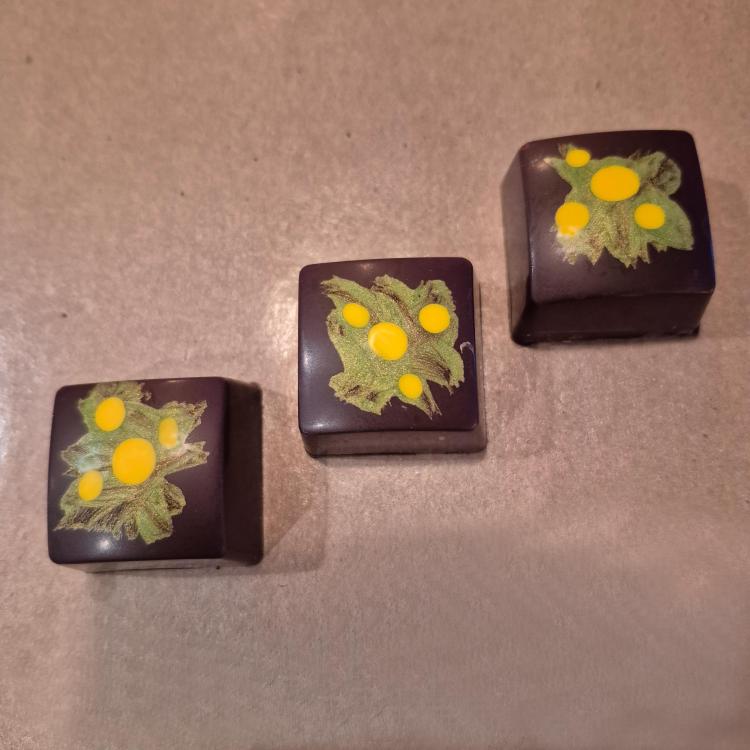
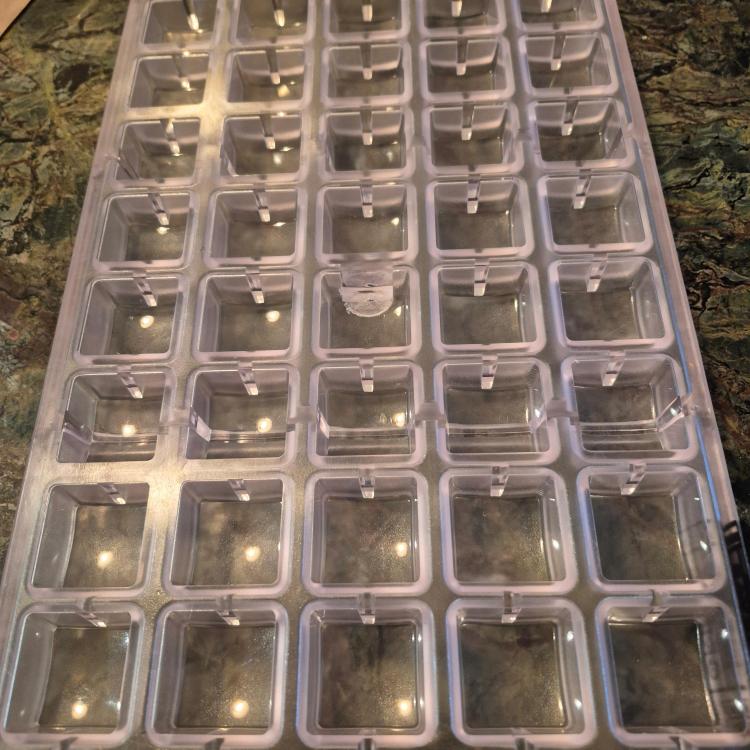
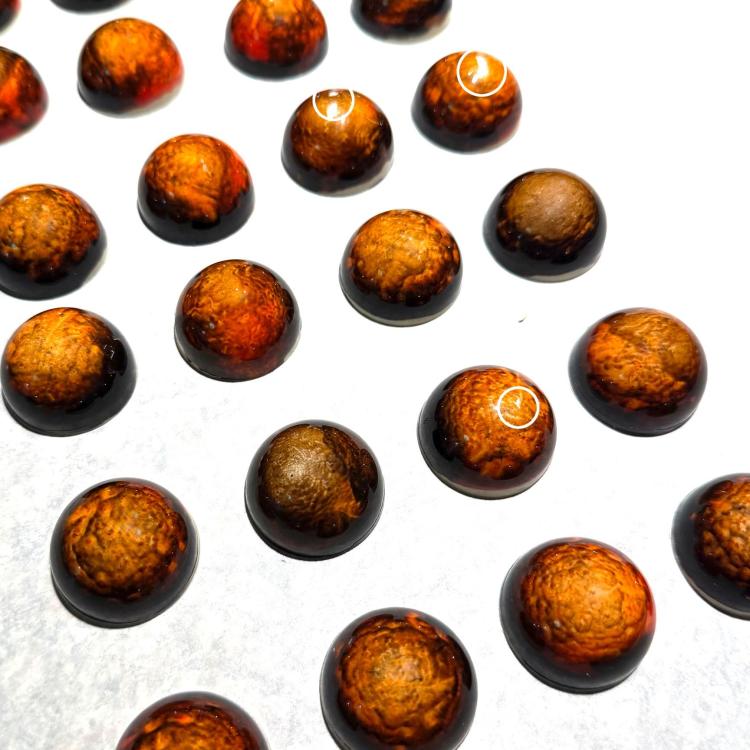
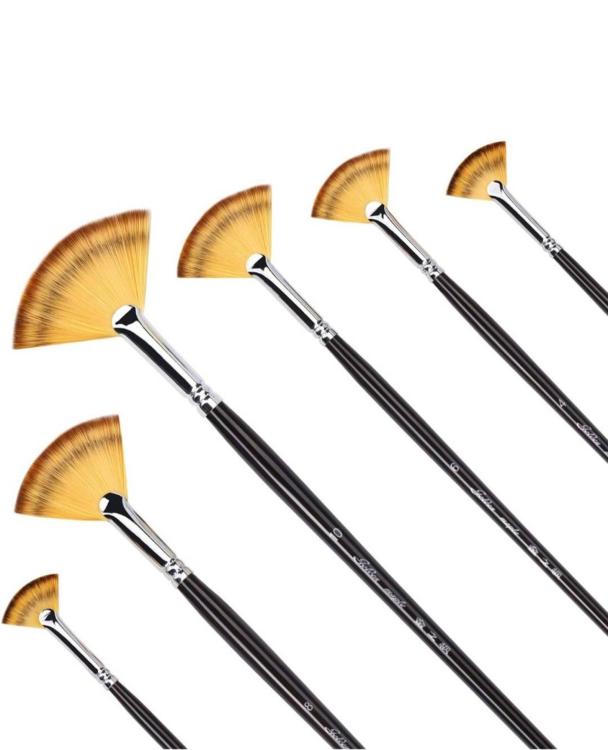
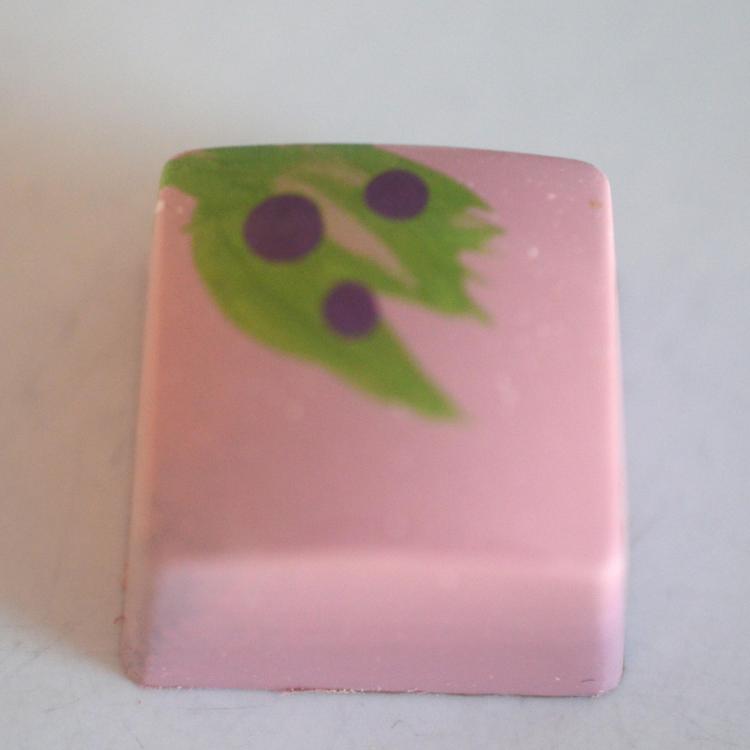


Confections! What did we make? (2017 – )
in Pastry & Baking
Posted
Yes, it is not one of the two standard sizes. Greyas calls the size "Series 4000." The mold is 322mm x 203mm, each cavity is 30mm x 30mm, and weight is 16g. So the capacity is about the same as the large dome from CW that I use a lot. In comparison, the mold size for CW's Series 2000 is 175mm x 275mm. Greyas makes a Series 2000 version that has the same cavity dimensions except it's not as tall; I got those from Chef Rubber. For some odd reason, the smaller version does not have the "chocolate creeping up the outside and spoiling the color" that many shallow molds are prone to, but the larger version does. The first time I used the mold at least one third of the bonbons were spoiled by that problem. I scraped off a few, but that doesn't always work. So--long story short--that's why the lemon bonbons have not been sprayed with CCB, it's just dark chocolate you see. I think it's fine, and it does have a nice shine (some of which I edited out because the reflected lights ruined the yellow flowers).